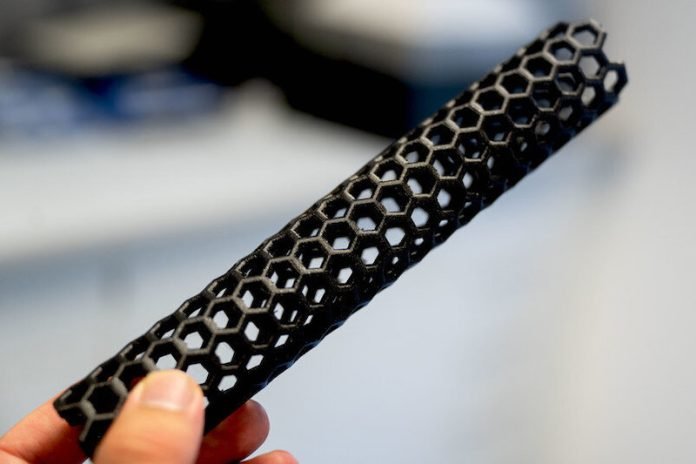
An interdisciplinary research team from Ruhr University Bochum (Germany), the Fraunhofer Institute for Microelectronic Circuits and Systems, and ETH Zurich has developed a new type of sensor that can detect bacteria and viruses.
These sensors are constructed using fluorescent carbon nanotubes equipped with DNA anchors that act as molecular handles.
The scientists attached biological recognition units such as antibodies or aptamers to the carbon nanotubes using the DNA anchors.
When these recognition units interact with viral or bacterial molecules, they alter the nanotubes’ fluorescence, causing changes in their brightness.
One key to the sensor’s functionality is its use of DNA structures with guanine quantum defects. These DNA structures are linked to the nanotube, causing a defect in the nanotube’s crystal structure and modifying its fluorescence at a quantum level.
This defect also functions as a molecular handle, allowing the attachment of a detection unit tailored to identify specific viral or bacterial proteins.
Customizable Carbon Nanotube Biosensors
The nanosensors developed by the research team are tubular structures made of carbon and are less than one nanometer in diameter.
When exposed to visible light, these carbon nanotubes emit light in the near-infrared range, which is ideal for optical applications due to the low interference at this wavelength.
Sebastian Kruss’s team had previously demonstrated how the fluorescence of nanotubes could be manipulated to detect crucial biomolecules.
In this study, they focused on customizing these carbon sensors to target different molecules more effectively.
This customizability makes the sensors akin to a system of building blocks, with each part being 100,000 times smaller than a human hair.
Sensor Showcased with SARS-CoV-2 Spike Protein
As a proof of concept, the team used the SARS-CoV-2 spike protein to demonstrate the sensor’s capabilities. They used aptamers, which are folded DNA or RNA strands capable of selectively binding to proteins, to detect the SARS-CoV-2 spike protein.
The fluorescent sensors successfully detected the presence of the SARS-CoV-2 protein with high reliability. Sensors equipped with guanine quantum defects showed higher selectivity and stability compared to those without such defects.
“The sensors’ stability is an advantage if you think about measurements beyond simple aqueous solutions.
For diagnostic applications, we have to measure in complex environments e.g. with cells, in the blood, or in the organism itself,” says Sebastian Kruss.
The team believes that their sensor concept could be extended to other detection units, such as antibodies, in the future.
The study was published in the Journal of the American Chemical Society.
Follow us on Twitter for more articles about this topic.



